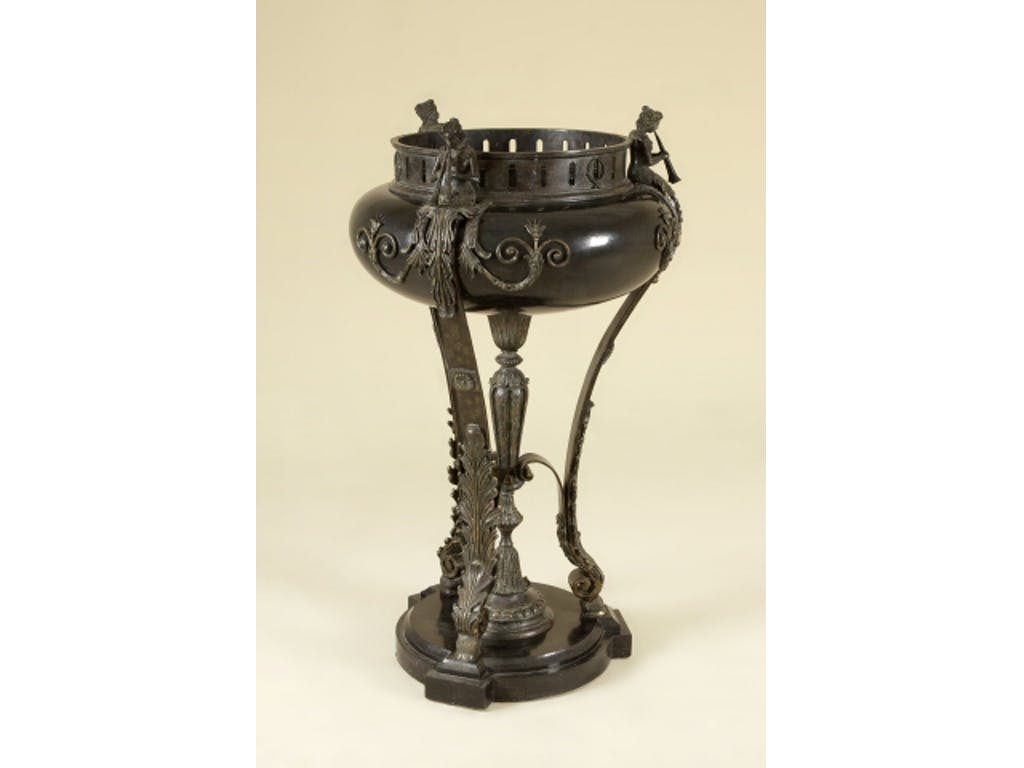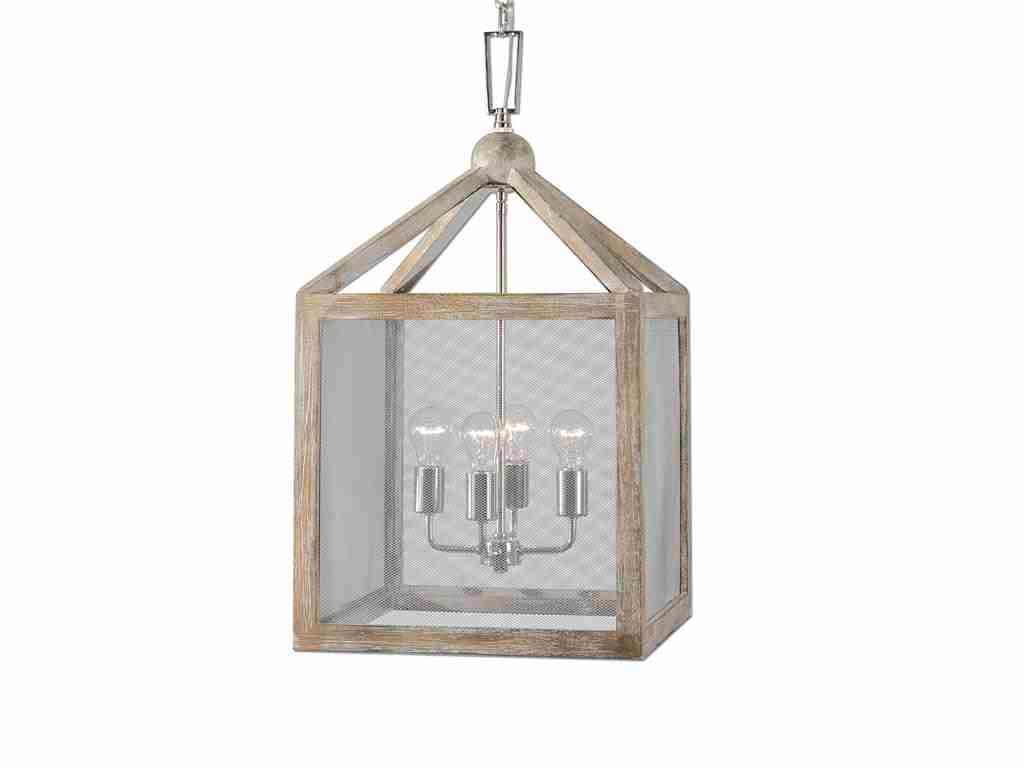Monday, September 3rd, 2018

Figure 1. Imagine your veranda donned by the Maitland-Smith OutdoorPatio JARDINIERE 8110-22. Its Verdigris patina brass, brass liner, and inlaid black stone would be a wonderful sight to behold.
It’s officially the beginning of Fall. No matter what the season, though, people tend to enjoy spending time outdoors even when they just sit on the balcony, porch, veranda or the deck. But wait, can you tell the differences in structure and features with each one?
The Porch (and Veranda)
According to the Encyclopedia Britannica, the porch is a roofed structure, usually open at the sides, projecting from the face of a building and used to protect the entrance. In the United States, this is what’s referred to as the veranda.
So there you go, you have two terms having just the same meaning and purpose. But there is just a little evidence of the existence of this structure prior to the Classical antiquity. There were many Egyptian wall paintings that indicated the occasional use of porch on some houses.
In Greece, the Tower of the Winds in Athens was a porch that had two columns carrying a pediment. The Romans, on the other hand, had colonnades which were used as porches. These all faced the street. This kind of porch was also seen up until the Early Christian basilicas’ creation. The porch was used as a formal entrance in old structures such as the Basilica of Old St. Peter’s.
The French in Burgundy developed porches that had vaulted structures. These showed great heights and were sometimes even as long as the whole church structure. An example of this fine architecture is the Vézelay abbey church.
If these are exciting enough for you, wait till you learn about the Gothic era and the two porch types that were then created as ecclesiastical buildings. The first one is a tiny, gabled porch that either projected from the south or north walls of a nave. The other one is what’s referred to as the galilee which was constructed so beautifully that it’s short of being a separate building.
The Germans were even more flamboyant in their porch designs. They had theirs frequently styled with tracery, canopies, cusping, etc.
In the Renaissance, porches were chiefly colonnaded porticos.
A Balcony
The Collins English dictionary defines a balcony as any platform on the outside of a building, above ground level, with a wall or railing around it. In a cinema or theater, the balcony is an area of seats above the main seating area.
Would you believe that balconies come with a two thousand year history? The term balcony was derived from the Italian term balcone meaning, a scaffold. The earliest types of balconies have been seen to date back for more than 2,000 years.
The balcony was originally created to increase air circulation especially during the hottest climates in Ancient Greece. Today, the balcony is integral to a building’s façade because it gives the property a more stylish vibe. Plus you get more space to roam in.
Balconies in the UK are Juliet balconies which date all the way back to the late Georgian era. They were created by architects to give structures a prestigious look. They were originally made of wrought-iron and were rectangular and filled the whole span of windows.
If you have traveled in Europe, you might have noticed how the finest balconies seem to have been constructed there. Most even have overlooking views of water-cooled gardens and courtyards.
The Deck
The Merriam-Webster dictionary is something resembling the deck of a ship such as a story or tier of a building or a flat-floored roofless area adjoining a house.
Wood decks can have wrought-iron furnishings. These structures can be used as a part of landscaping, an exterior part of a house, or as an alternative to the patio.
Tags: balcony, balcony history, deck, deck design, deck history, McCreerys, McCreerys Home Furnishings, patio, patio design, patio history, veranda, veranda history
Posted in Interior Design 101, Interior Design Elements, Outdoors Style | Comments Off on Porch, Veranda, Deck and Balcony? Do You Know the Difference?
Tuesday, August 30th, 2016

The Lamps and Lighting Uttermost Nashua 4 Light Wooden Lantern Pendant 22050 illuminates and adds beauty to your veranda.
Whether it’s winter, spring, summer or fall, it is great to be able to enjoy the outdoors even when this is only from your home’s veranda. There are two forms of the word veranda. One is simply veranda and the other is verandah though the version minus the h seems to be preferred by more people.
The veranda has become a part of many homeowners’ psyche. This roofed platform outside of your home often extends to the front or, at times, extending till the sides of the structure. A veranda can be enclosed by railing.
Veranda History
The word verandah is believed to have come from India. This is a general term used to describe any outdoor extension of the home. There are also words that sound similar in Portugal and Spain. These are baranda also barandilla. It was only when this structure reached Australia that the term veranda became that covered area which comes with balustrades.
Since there are many meanings that are being attributed to veranda, a lot of covered areas outside of the house have been referred to as such.
Getting your veranda ready for those outdoor fall parties and cool, starry evenings means you also need to prepare to decorate. Since the veranda is essentially attached to the home structure, the structure plays a huge role on the curb appeal. Decorate the veranda for a more comfortable living space and an appealing view.
Brighten Up
Install recessed lighting along the ceiling of the veranda. Place them at regular intervals so that each fixture is able to illuminate the space when nighttime comes. These lights can also up the level of social entertainment, security and curb appeal.
Have the lights installed directly down the veranda’s back wall so that the space’s texture and color are both enhanced. Place a lovely pendant light right in front of the entryway to illuminate the area. This should be stylish enough to catch the attention of your friends and guests. Add more glamour by draping strands of party lights all around the porch posts, handrails and columns.
Bring in the Cool Breeze
Add a ceiling fan or two depending on the size of the veranda. This should provide a cool breeze during the hot days and those extra warm nights. Find a ceiling fan that goes with the theme that you set up on your veranda. Black blades would go well with a black and white theme especially in a Georgian-style place. Bronze blades, on the other hand, complement traditional setups.
If you have a modern veranda, then you can use portable oscillating fans which come in various sizes, styles and colors. These can be placed anywhere on the veranda as the needs arise.
Set Up Comfy Seats
Comfortable seats should be your chief concern especially when you are opting to socialize in your veranda. As a relaxation haven, the space should have cushioned seating, maybe even a plush carpet.
If you plan to dine there, then add a dining set and a bench. Increase the livability of this outdoor space by adding ottomans and accent tables.
Choose weather-resistant furniture pieces such as wrought-iron. If the space is amply shaded, then you can brave having wicker furniture. White wicker furniture can add a casual appeal but if you want to achieve a traditional ambience, then bring some wooden outdoor pieces.
Add some area rugs that are especially designed for outdoor spaces to cap the laidback, rustic, traditional, or just about any look that you set up.
Nature and Your Veranda
Make your veranda more exciting by adding decorative accents such as ceramic pots, greeneries, flowers, even edible herbs. Add some wind chimes, a small fountain, some paper lanterns and you’re good to go.
Tags: designing the veranda, McCreerys, McCreerys Home Furnishings, tips, veranda, veranda design, veranda history
Posted in Furniture, Interior Design 101, Outdoors Style | No Comments »
© McCreery's Home Furnishings | All Rights Reserved | Privacy Policy